MusicRadar Verdict
If the thought of setting up a PA system brings you out in a cold sweat, then the Maui 5 GO 100 is most certainly for you. This intuitive portable line array takes literally seconds to set up, while the multipin connectors mean you literally can't do it wrong. Boasting an impressive 120dB (peak) maximum volume, the Maui 5 GO will handle a number of scenarios, from busking on a street corner, to small pub gigs, and even conferences and speeches.
Pros
- +
Very quick to set up
- +
Easy to use
- +
Lightweight
Cons
- -
Can sound muddy in the low-frequencies
- -
No reverb
MusicRadar's got your back
LD Systems Maui 5 GO 100: What is it?
As technology has moved on, more and more people are stepping away from the heavy, cumbersome black boxes typically found at the side of every stage in favour of smaller, sleeker column systems. These portable line array units offer a convenience simply not found in standard PA speakers and can be set up by someone with no specialist training - so it's easy to see why they have become so popular.
The Maui 5 GO 100 is LD Systems latest offering and a slightly improved version of the original Maui 5 GO. This is a battery-powered column PA, designed with portability in mind, featuring a newly designed lithium-ion battery that gives you up to 12 hours of continuous operation. The 4-piece design allows for easy assembly, and the lightweight nature of the system means it's even easier to carry around - weighing in at only 12.4kg.
The Integrated 4-channel mixer offers the standard connections you'd expect from a system like this, with microphone, line-level, Hi-Z and MP3 inputs, as well as Bluetooth connectivity for streaming music wirelessly. All the mixer controls can be found neatly atop the sub unit, with controls for the levels of each channel, a Bluetooth link button, and a system button that allows you to switch between mono and stereo operation. As you'd expect, the sub-control gives you the ability to balance the subwoofer level against the column speakers and the hi-boost control is a high shelf filter used to fine-tune the upper frequencies.
Concealed in the top column is a quad of 3" neodymium speakers, used to take care of the high and mid frequencies. At the same time, the low-end is handled by the 8" ferrite subwoofer located at the base of the unit. The built-in amplifier kicks out an impressive 200W RMS - 800W peak - and boasts a maximum volume of 120dB. The Maui 5 GO 100 is available in two colours - black or white.
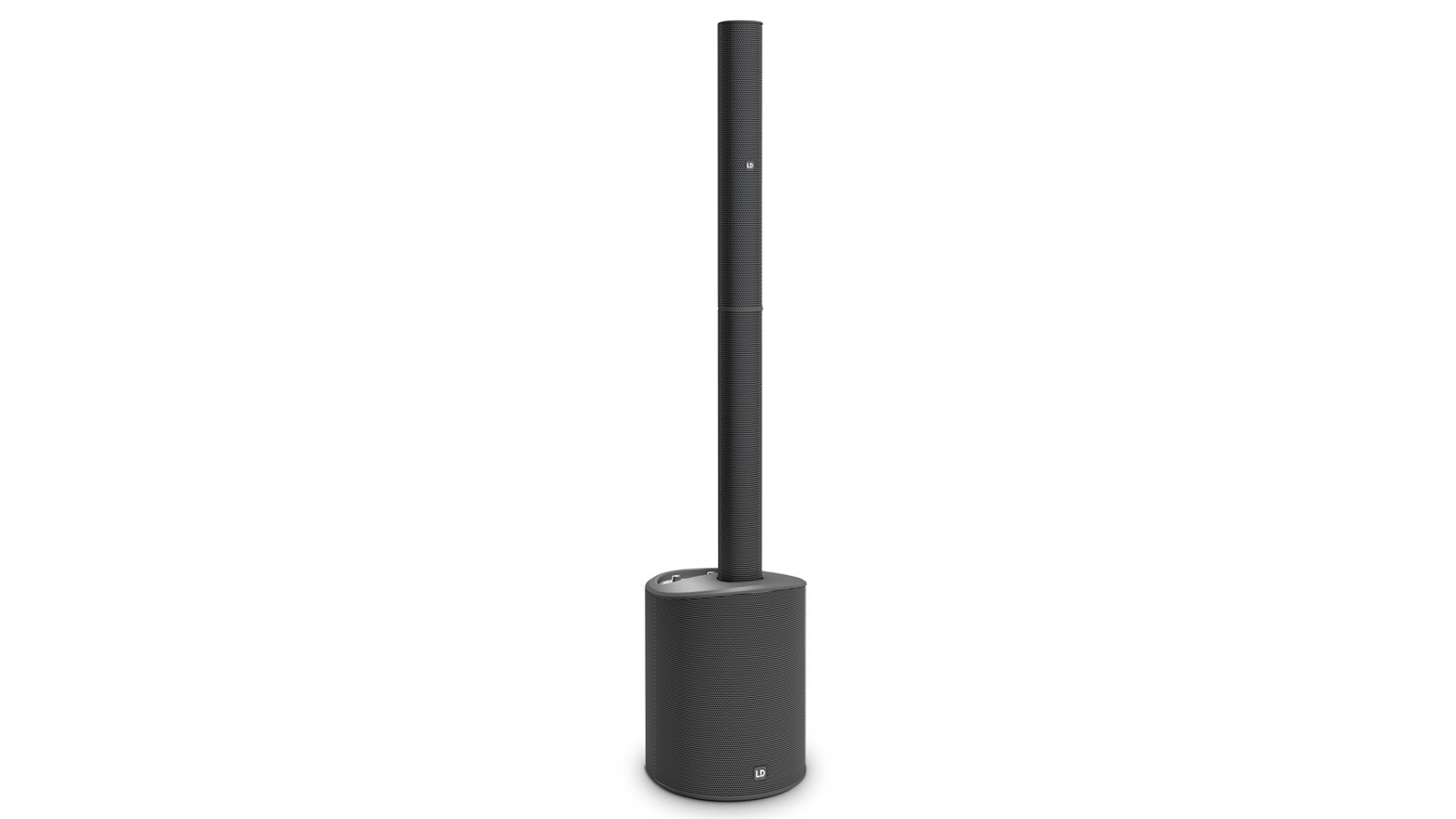
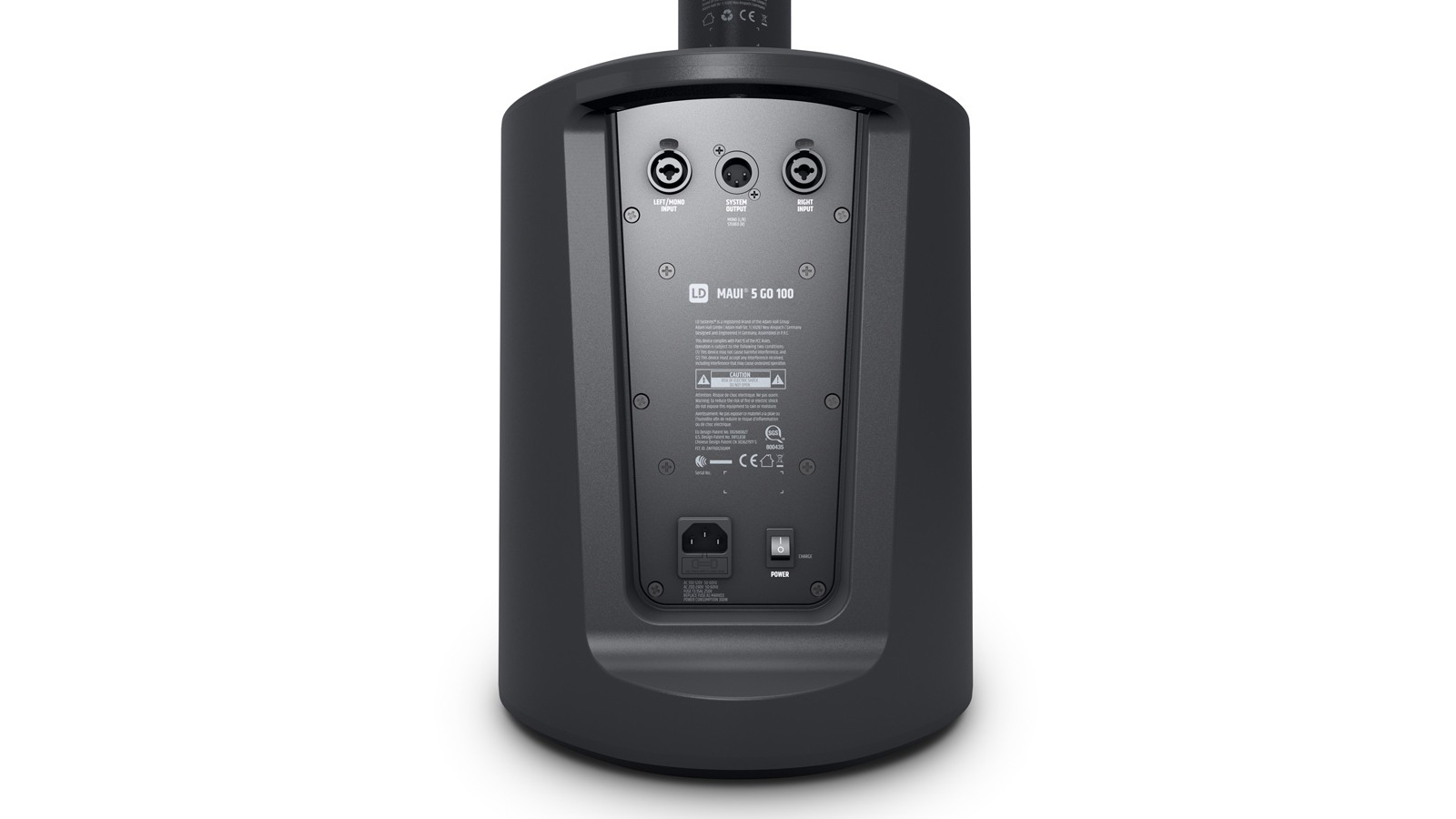
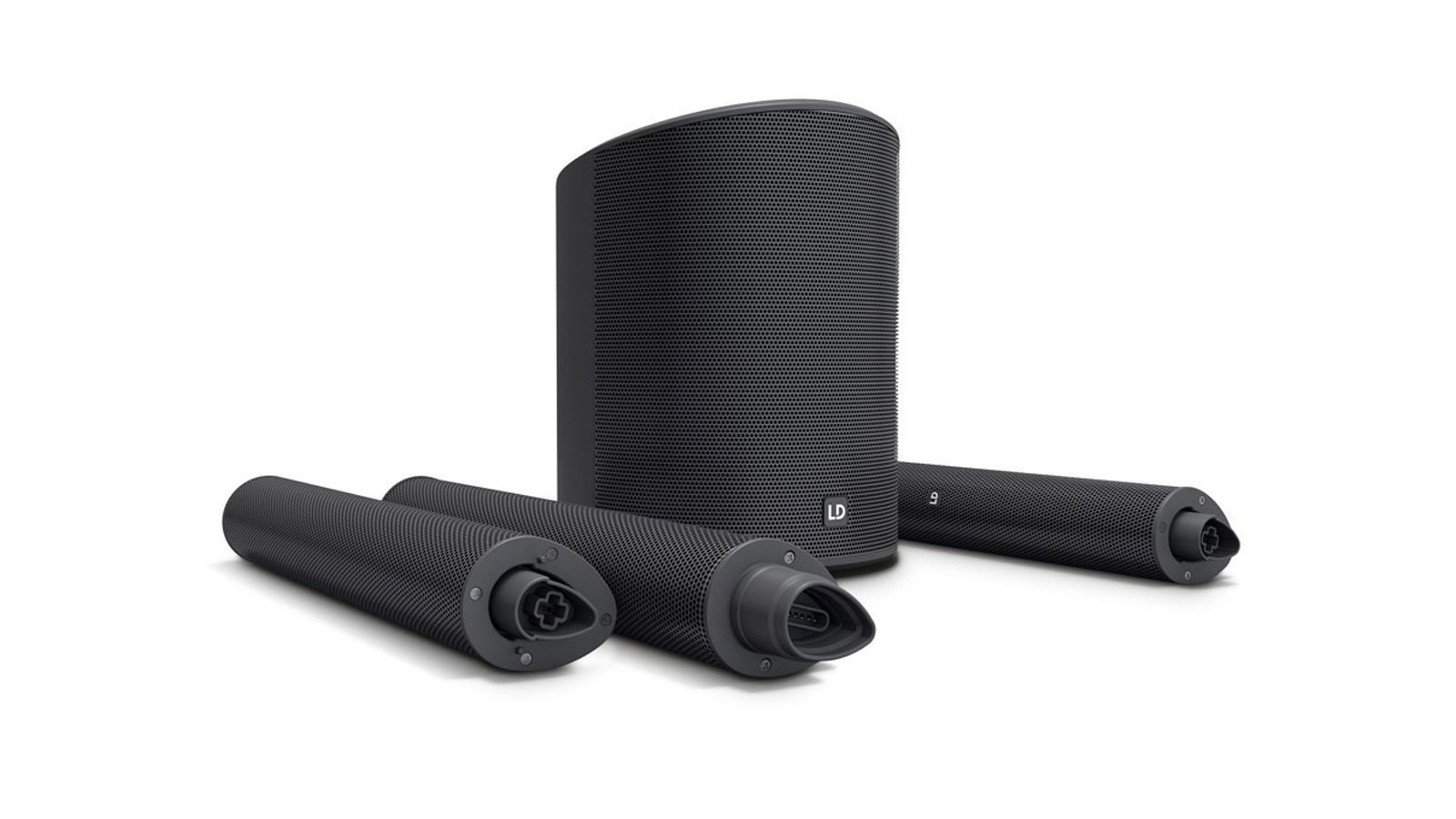
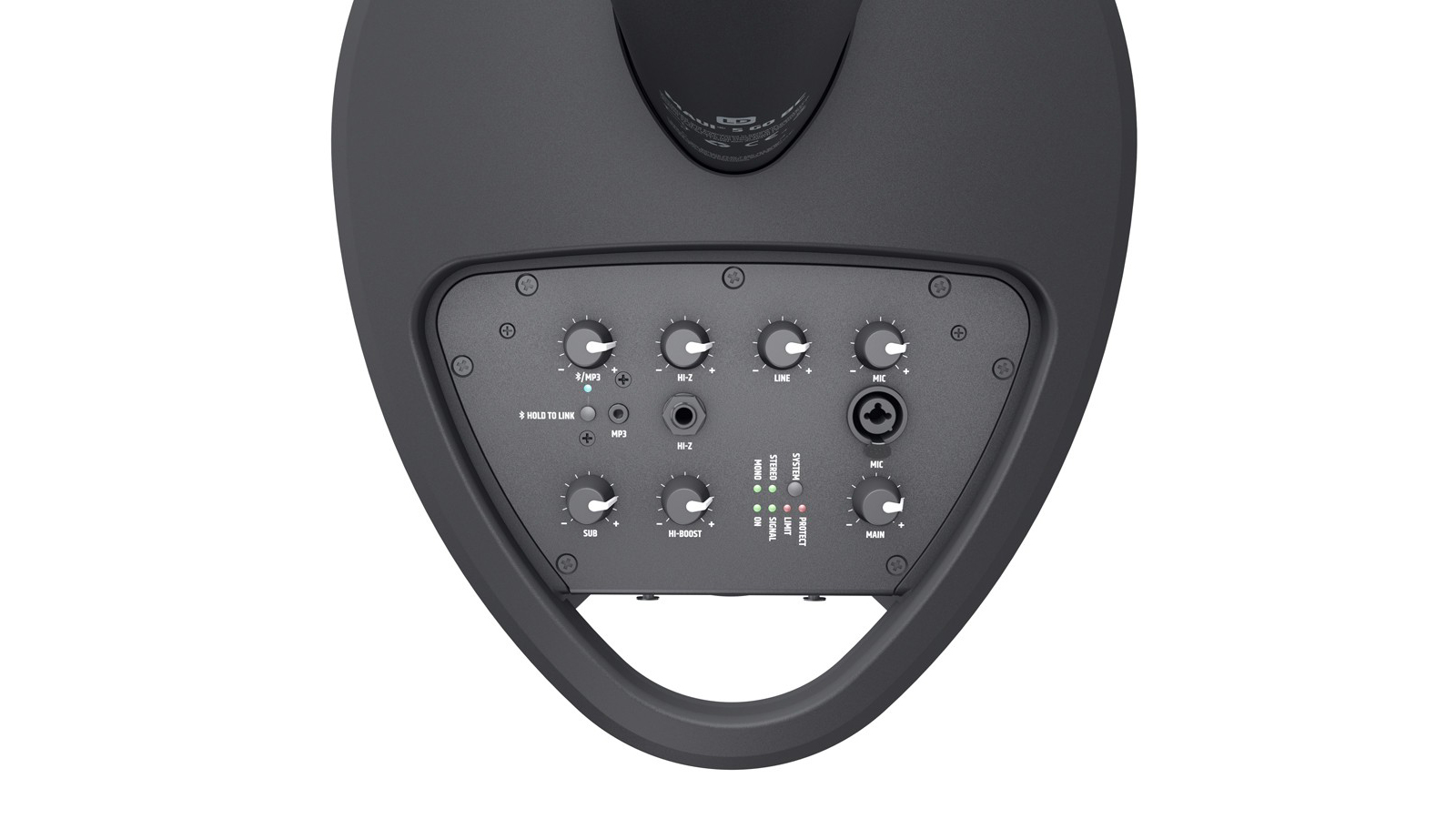
LD Systems Maui 5 GO 100: Performance & verdict
Set up
The first thing that has to be said about the Maui 5 Go 100 is just how simple it is to set up, taking only minutes from unboxing to playing music. The intuitive design of the columns mean you simply slot the sections together, with no need for cables or any specialist knowledge of PA systems, and with the way the multi pins have been engineered, you can't assemble the column incorrectly - so there is no need to worry about getting it wrong.
The main column comes in three sections, with the top housing the four small speakers that drive the high and mid frequencies, while the middle section works as a spacer to give the top speakers their height, although this can be negated for a shorter system. The last section of the column conceals the new 3,200 mAH lithium-ion battery, the life of which depends heavily on how you use the system. LD says you can expect to get 12 hours at 98 dB, 6 hours at 104 dB, and only 4 hours at 120 dB. On the rear of this section, you'll find a "check battery" button, along with four LEDs, which indicate the battery's charge level. This is a convenient feature and something we are glad to see on this system.
It should be pointed out that when fully set up, the columns can feel a little loose in the fittings and can wobble around if the system is moved when set up - this is an issue we have seen in the older version of the Maui 5 as well. To avoid any damage to the connectors, we suggest dismantling the unit before moving it.
Mixer
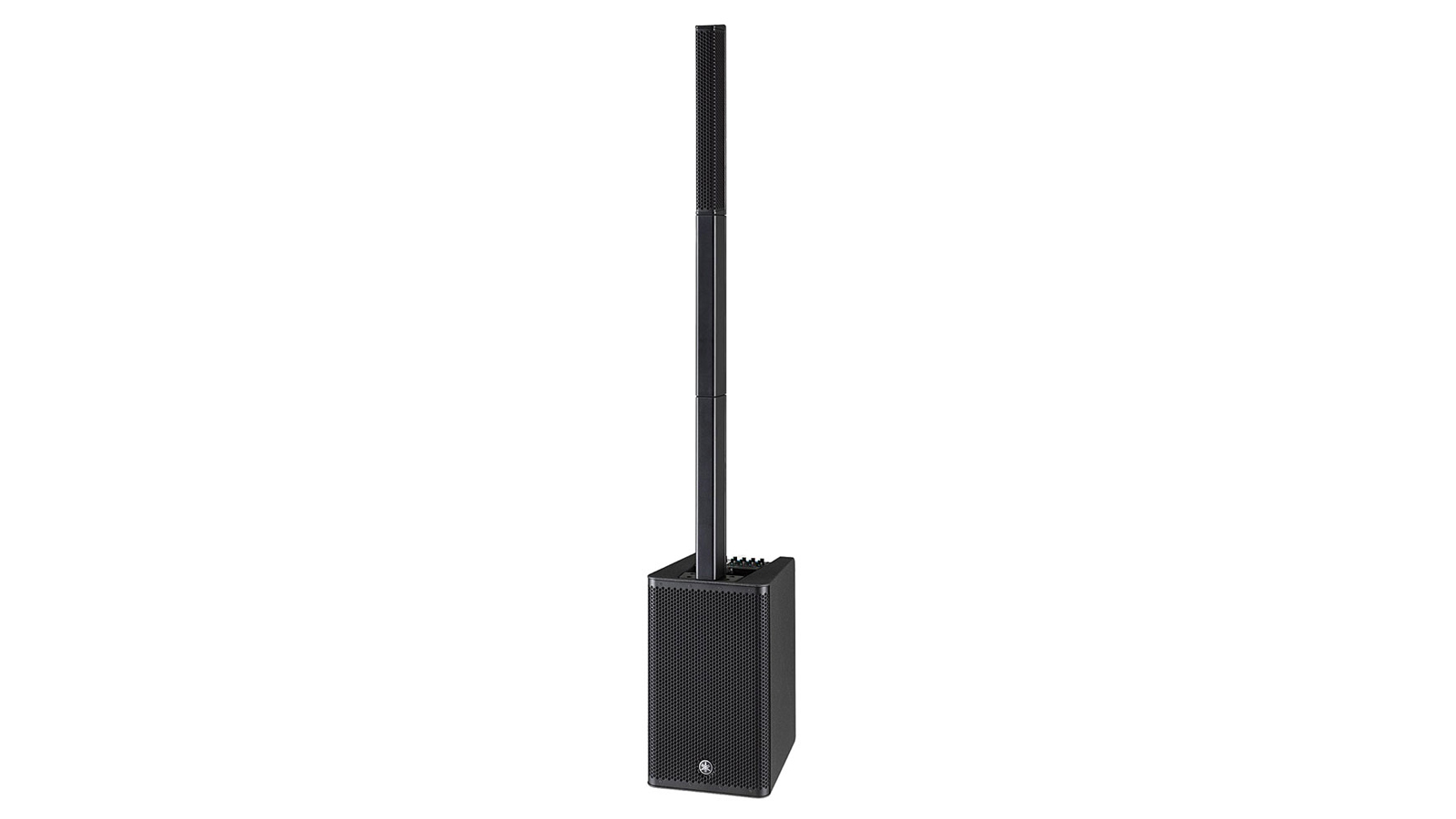
Yamaha Stagepas 1K: If you don't require your next PA to be battery operated, then the Stagepas 1K is a solid option.
Bose S1 Pro: This is one of the most popular options for a battery-powered PA, and for good reason. It's loud, clear and sounds fantastic.
Okay, so slotting the parts together is easy, but what about the integrated mixer. Located at the rear of the sub unit, the four-channel mixer is well labelled and easy to use - albeit a little basic. While it's nice to see an uncluttered mixer on a system like this, we can't help but long for the inclusion of some sort of EQ control - especially on the mic channel. Yes, we could hook up a mixer to gain more control, but we feel that would detract from the all-in-one nature of the system. A one-knob filter control - similar to what Yamaha uses - wouldn’t go amiss here. That said, you do have some control over the tone of the entire system with a sub-control for balancing the low-end and a hi-boost for adding extra top-end when it's needed.
We are happy to see the inclusion of Bluetooth streaming for playing back audio. This is a handy feature for not only playing background music in between sets but also for playing backing tracks. Linking devices couldn't be simpler, all you need to do is press and hold the "hold to link" button, and the Maui 5 Go will appear in your available devices - we had AC/DC blaring in no time at all, as it literally took seconds to pair.
We have to bring up the lack of reverb on the Maui 5 Go 100. While this isn't a deal-breaker for us, it would have been a nice inclusion and further separated it from the previous model. As this sleek PA is obviously aimed at the singer-songwriter market, a global reverb control would come in very handy - who doesn't like a little ambience on their vocals or guitar?
Sound
Now, that brings us on to the sound of the Maui 5 Go 100. Overall the tone produced by this plucky little line array is rather impressive. After putting it through its paces with a range of musical styles, it's safe to say it will cover almost anything. The subwoofer may be small, but it certainly packs a punch, kicking out plenty of low-end. The low frequencies can get a little muddy and woolly sounding at louder volumes - although you can turn down the sub if it gets too much. That said, there is more than enough clarity in the higher frequencies, and hi-boost control allows you to tailor the top end response to the room you are in.
The LD is designed to serve up to 100 people, and while this would depend on several factors, such as room size, the style of music, and the instruments used, it definitely appears to kick out more than enough volume - especially impressive when you consider it's small stature.
The onboard LECC DSP (limiter, EQ, Compressor, Crossover) processes the audio differently depending on your overall volume. The limiter will ensure you get the cleanest audio even at the loudest volumes, preventing overloading and distortion, while the compressor automatically kicks in at low volumes, boosting the bass for a fuller sound.
Style
We quite like the overall aesthetic of the Go 100, its soft curves make it appear modern, elegant, and perfect for a variety of applications.
We had an opportunity to have a look at both available finish options - black and white - and although white wouldn't be our first choice, we can see why some people would opt for this version. Although it may look like it belongs more in the Apple store than a rock venue, the white allows the Go 100 to seamlessly blend into the background of venues such as schools, museums, conference rooms, and even weddings.
LD Systems Maui 5 Go 100: Hands-on demos
LD Systems
LD Systems Maui 5 Go 100: Specifications
- Type: Active
- Max. SPL (peak): 120dB
- Frequency response: 50 - 20000 Hz
- Dispersion (H x V): 120° x 20
- Overall height: 1985 mm
- Weight: 12.4 kg
- Battery: Lithium-ion
- Battery operation time at maximum load: 12 hours at 98 dB (Lounge), 4 hours at 120 dB (DJ mode), 6 hours at 104 dB (Live music)
- Controls: BT level, BT pairing, Line level, Main level, Mic level, Mono/stereo mode, MP3 / Hi-Z level, On / Off, Sublevel
- Amplifier: Class D
- Amplifier output system (RMS): 200 W
- Amplifier output system (peak): 800 W
- Low/mid driver size: 8"
- Midrange size: 4 x 3"
- Contact: LD Systems
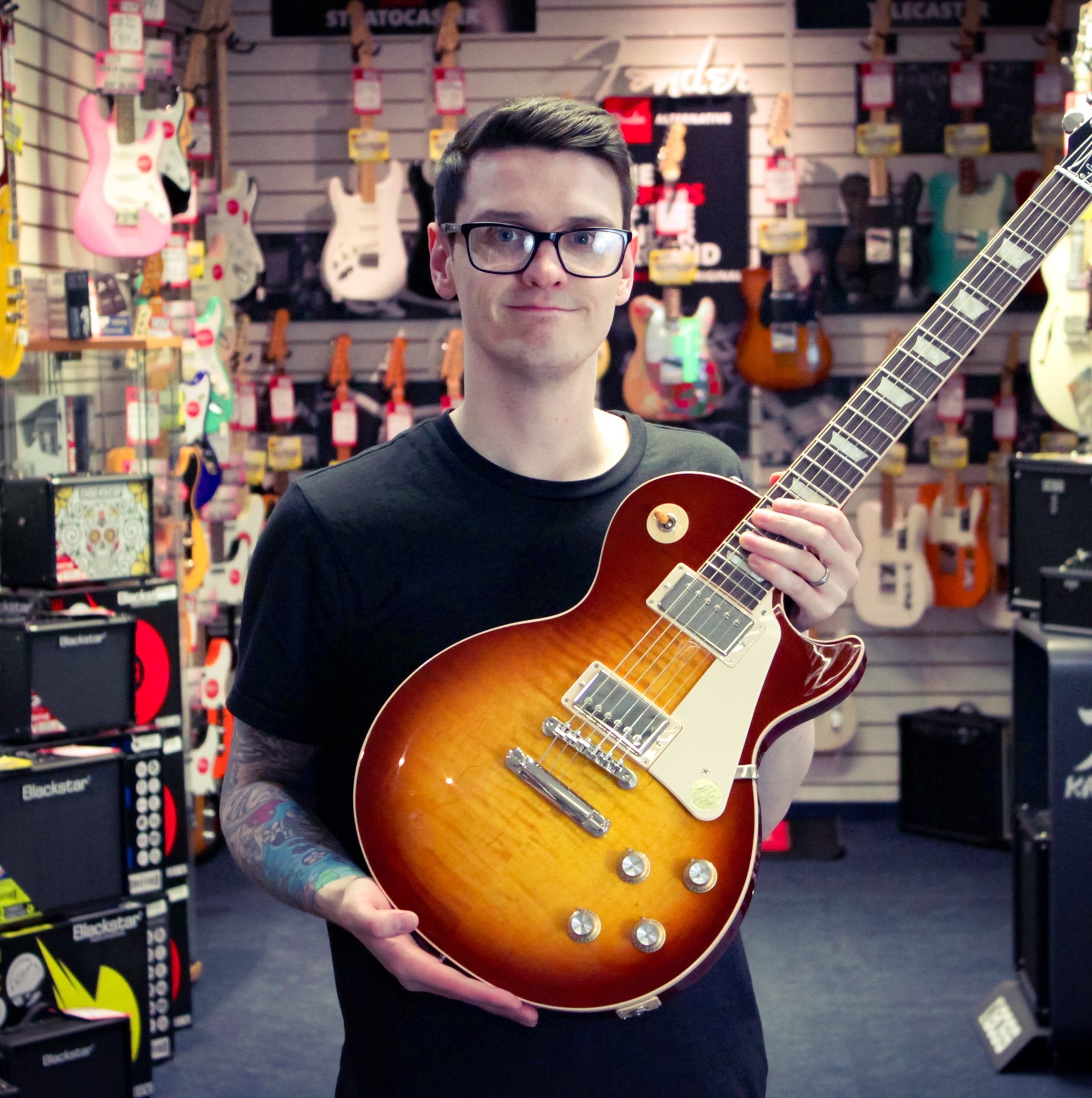
I'm a Senior Deals Writer at MusicRadar, and I'm responsible for writing and maintaining buyer's guides on the site - but that's not all I do. As part of my role, I also scour the internet for the best deals I can find on gear and get hands-on with the products for reviews. My gear reviews have been published in prominent publications, including Total Guitar and Future Music magazine, as well as Guitar World.com. I've also had the privilege of interviewing everyone from Slash to Yungblud, as well as members of Sum 41, Foo Fighters, The Offspring, Fever 333 and many more.
I have a massive passion for anything that makes a sound, particularly guitars, pianos, and recording equipment. In a previous life, I worked in music retail, giving advice on all aspects of music creation and selling everything from digital pianos to electric guitars, entire PA systems, and ukuleles. I'm also a fully qualified sound engineer who holds a first-class Bachelor's degree in Creative Sound Production from the University of Abertay and I have plenty of experience working in various venues around Scotland.
“Built from the same sacred stash of NOS silicon transistors and germanium diodes, giving it the soul – and snarl – of the original”: An octave-fuzz cult classic returns as Jam Pedals resurrects the Octaurus
What’s the buzz? Meet Yellowjacket, Cherry Audio's recreation of EDP’s trend-setting Wasp from 1978
“A fabulous trip through all eight songs by 24 wonderful artists and remixers... way beyond anything I could have hoped for”: Robert Smith announces new Cure remix album










